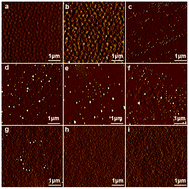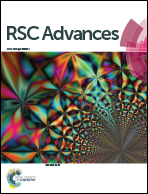High mechanical properties of epoxy networks with dangling chains and tunable microphase separation structure
Abstract
A series of epoxy systems with tunable rigid-flexibility were prepared by the curing reaction of bisphenol F diglycidyl (DGEBF), a single-ended amine with alkyl chains (n-butyl, octyl, dodecyl), 4,4′-diaminodiphenylmethane (DDM) and 4,4′-diaminodicyclohexylmethane (H-DDM). By means of adjusting the composition of the curing agent (the molar ratio between H-DDM and DDM), nano- and submicron-sized phase separations were observed by atomic force microscopy (AFM). And diffraction peaks were not observed in the wide angle X-ray scattering (WAXS) characterization which revealed that there was no crystallization in the modified epoxy resin. Besides, the result of nanoIR characterization proved that the aggregation of aliphatic chains led to the microphase separation structure, which can remarkably improve the mechanical properties of epoxy resins. The effects of side chains on the mechanical and thermal properties of epoxy networks were investigated. Especially, the EC8-5′ (the molar ratio between H-DDM and DDM was 45/55, the mass ratio of the n-octyl amine to DGEBF was 5 : 100) sample exhibited splendid mechanical properties with an attractive tensile strength of 88.4 MPa, an elongation at break of 6.6% and a tensile modulus of 3.5 GPa.



 Please wait while we load your content...
Please wait while we load your content...